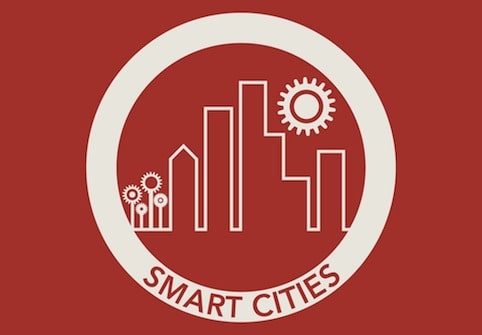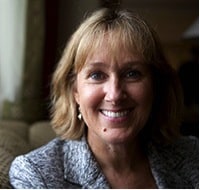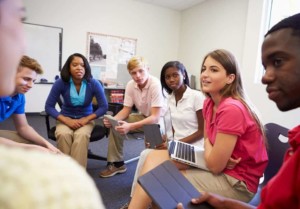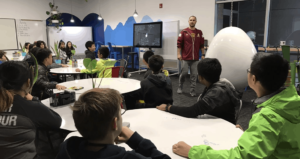Building a National Innovation Partnership

By: Karen Cator
In order to affect positive change in education we must stand on the shoulders of giants. Education is multi-faceted, multi-layered, and often under-resourced; it can benefit from coordinated, strategic and engaged partnerships that span from the classroom to the White House.
Digital Promise, an independent, bipartisan nonprofit authorized by Congress to improve the opportunity to learn for all Americans through technology and research, is founded upon the strength of partnerships. We believe that innovation is not only aided by, but dependent upon, stakeholders working together to solve problems.
Digital Promise was authorized in 2008 and launched in late 2011 to identify multiple examples of excellence and innovation in American education—in the public sector, the private sector, research community, start-up scene—and organize efforts toward collaboration among multiple stakeholders. The internet has knocked down communication barriers, but schools still struggle to understand the education technology market; vendors still develop products without consideration for user needs and basic research; and most research in the field still occurs too slowly and without adapting to changes in the classroom.
At launch, we formed the League of Innovative Schools, a national network of school districts and superintendents that collaborate with developers, researchers, and one another to improve the education technology ecosystem. Here are the methods we use for establishing this partnership:
Start Smart. In late 2011, Digital Promise knew that bringing strong stakeholder groups to the table was imperative. Through the guidance of the U.S. Department of Education, thought leaders, and practitioners, we selected the first cohort of League members.
Some had a proven track record of improving student achievement through technology; others were in the early stages of forward-thinking, outcome-driven initiatives. In all cases, we looked for school leaders willing to try new things, share ideas with others, and partner to solve common and complex problems. They also reflected the national scope and diversity of public education in the U.S.—rural and urban schools, low-income and middle-class, high-minority and English language learners. Since its inception, for the League to work it’s been important that we highlight innovations that can occur anywhere.
Create Incentives. Educators are busy and there are many great networks to be a part of. With any partnership, it’s important to create incentive for participation. Because League members were selected by a group of respected peers and leading thinkers, our initial cohort of superintendents, led by Mark Edwards of the renowned Mooresville Graded School District, were important early advocates. Membership meant more than a line on the resume; it meant collaboration with thought leaders in the field.
By partnering with developers and researchers, we offer opportunities that many districts cannot access in their local communities—curated product pilots, invitations to participate in potentially groundbreaking research, and information about grants and competitions that can accelerate their work.
Eliminate “Us vs. Them”. In all cases, we aim for our partners to mutually benefit from solving real problems for real schools. We’ve heard from stakeholders that it’s nice to not feel as though it’s “us vs. them”—that there is a venue where educators and non-educators can collaborate around a shared set of priorities and interests. In this respect, Digital Promise’s role is that of convener and, in some cases, a “matchmaker,” finding the right stakeholders for the right need.
Blended Participation. Just like in classrooms, in partnerships online and face-to-face interaction is important in sparking collaboration. Twice per year, we convene our stakeholders for a collaborative workshop co-hosted by one of our League member districts. In between meetings, members participate in research studies, visit each other’s districts, organize around common areas of interest, and generally share knowledge.
In just over two years, the League has engaged 46 members in 25 states, collectively representing nearly 3 million students. The League of Innovative Schools has uncovered multiple interesting challenges that Digital Promise is well suited to tackle, from expanding competency-based education, to supporting adult learners, to engaging both entrepreneurs and practitioners around research. With an overarching goal of communicating broadly and clearly, Digital Promise now employs a team of 18 and works to establish partnerships within and across our initiatives.
Our theory of change is that a stronger ecosystem will lead to better decision-making, which in turn will produce better results for students. If the giants within communities of educators, entrepreneurs, and researchers stand together, we will all be better informed and equipped to solve shared problems.
The Smart Cities blog series catalogs innovations in learning in America’s great cities. We’re writing a book about what we’re learning–and you can help.
 Karen Cator is President and CEO of Digital Promise. From 2009-2013, Karen was Director of the Office of Educational Technology at the U.S. Department of Education, where she led the development of the 2010 National Education Technology Plan and focused the Office’s efforts on teacher and leader support. She also was a leading voice for transforming American education through technology innovation and research. Prior to joining the department, Karen directed Apple’s leadership and advocacy efforts in education. Karen holds a Master’s in school administration from the University of Oregon and a Bachelor’s in early childhood education from Springfield College. She is a past chair for the Partnership for 21st Century Skills and has served on boards including the Software & Information Industry Association-Education.
Karen Cator is President and CEO of Digital Promise. From 2009-2013, Karen was Director of the Office of Educational Technology at the U.S. Department of Education, where she led the development of the 2010 National Education Technology Plan and focused the Office’s efforts on teacher and leader support. She also was a leading voice for transforming American education through technology innovation and research. Prior to joining the department, Karen directed Apple’s leadership and advocacy efforts in education. Karen holds a Master’s in school administration from the University of Oregon and a Bachelor’s in early childhood education from Springfield College. She is a past chair for the Partnership for 21st Century Skills and has served on boards including the Software & Information Industry Association-Education.






0 Comments
Leave a Comment
Your email address will not be published. All fields are required.